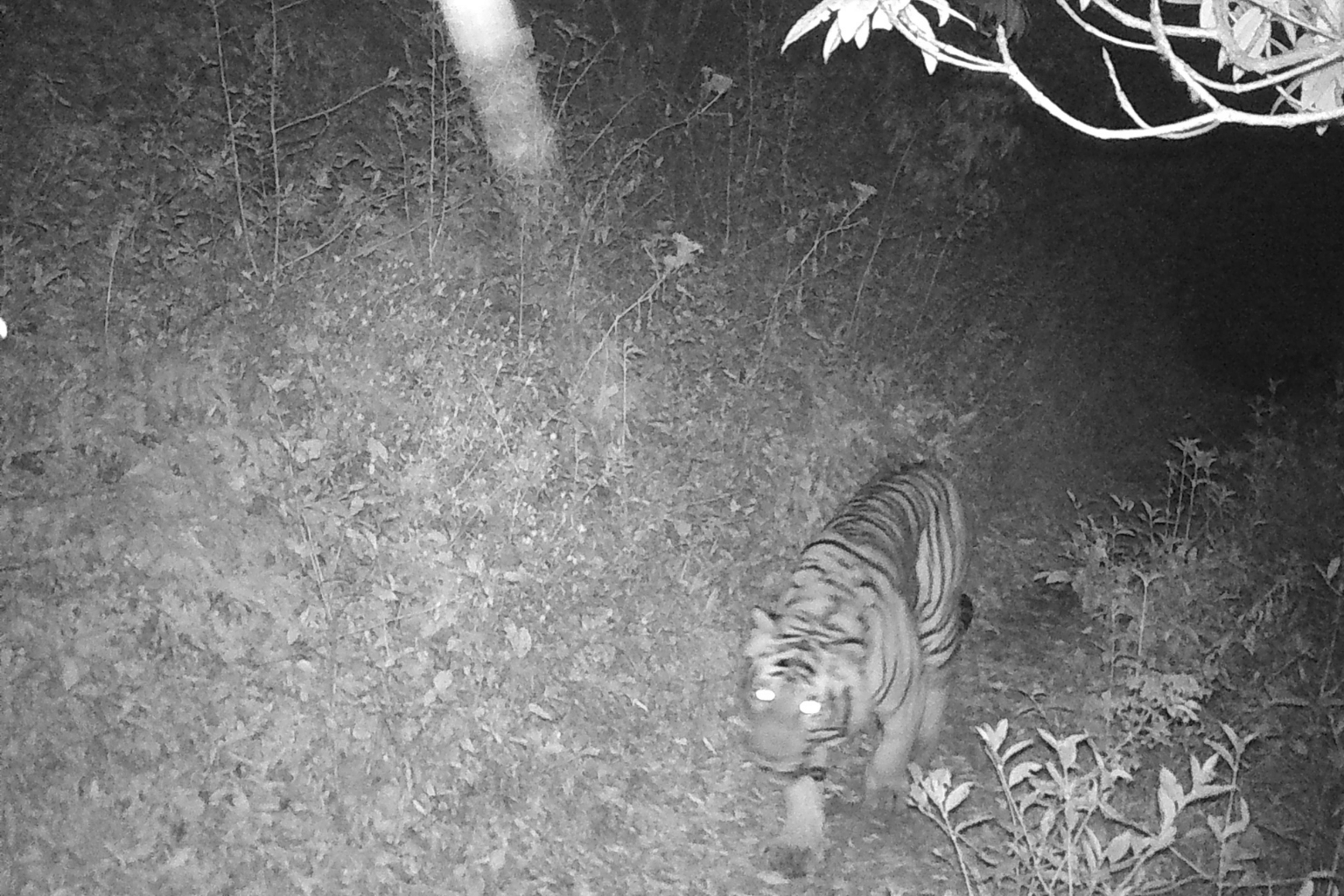Press Release: Tiger Photographed for First Time In Nepal's Red Panda Habitat
At an unprecedented altitude in Nepal, a wild tiger has been photographed in the mountain forest habitat of red pandas.
Read in Nepali
Download a PDF of the press release
The Bengal tiger Panthera tigris tigris — one of the planet’s most iconic large carnivores — was photographed at an elevation of 3,165 meters by a camera trap in a forest in Ilam district, eastern Nepal. It is the highest elevation a tiger has been sighted in Nepal and the very first photographic evidence of this species in the mountains of the country's eastern region. This tiger sighting in Ilam district brings the total number of cat species in the Kangchenjunga Landscape (KL) in eastern Nepal to eight species including leopard, clouded leopard, snow leopard, Asiatic golden cat, leopard cat, jungle cat, and marbled cat.
The photographs of the tiger were taken by one of twenty camera traps set to monitor ten wild red pandas equipped with GPS-satellite collars in KL. As part of that study — funded by Rotterdam Zoo in The Netherlands — we have been deploying camera traps to monitor the movement of red pandas and their response to disturbances.
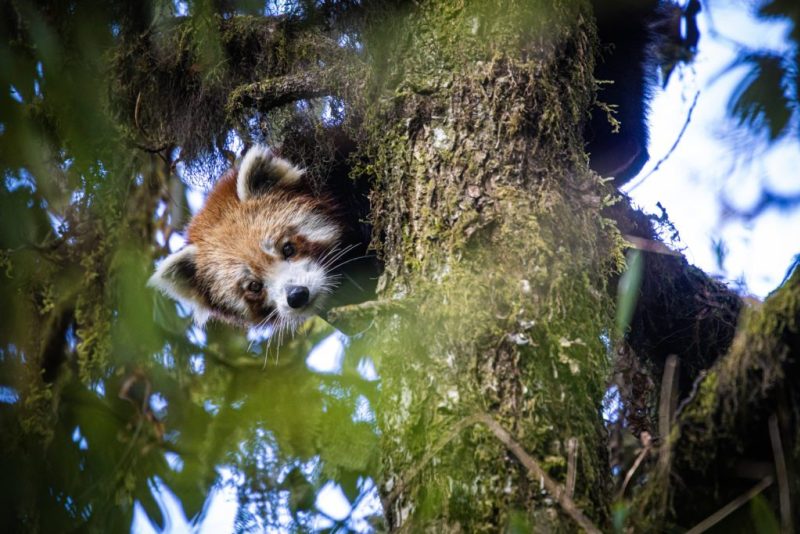
Red panda 'Paaru' with GPS collar. © James Houston/RPN
Red Panda Network (RPN) also worked with Rotterdam Zoo on an intensive camera trap mammal survey in 2018 and 2019. The installed camera traps have photographed a thriving wildlife population in the PIT corridor and the first photographic evidence of the rare marbled cat in Panchthar district, Nepal. Other high-profile species that were documented include red panda Ailurus fulgens, Himalayan black bear Ursus thibetanus, Himalayan serow Capricornis thar, Himalayan goral Naemorhedus goral, and Assam macaque Macaca assamensis.
The highest recorded elevations for the Bengal tiger are 3,630 meters in India and above 4,400 meters in Bhutan. The previous highest elevation for the species in Nepal was 2,500 meters in the far-western Dadeldhura district.
“Tiger is an umbrella species that ensures the well-being of the entire ecosystem across its habitat,” says Man Bahadur Khadka, Director General of the Department of Forests and Soil Conservation (DoFSC). “This record of tiger presence signifies the importance of high-altitude forest in the mountains as a habitat for these endangered big cats,” he added. The red panda GPS-collar study has been implemented under the leadership of the DoFSC with technical support from the Department of National Parks and Wildlife Conservation, Government of Nepal and is one of the important activities of the Red Panda Conservation Action Plan for Nepal.
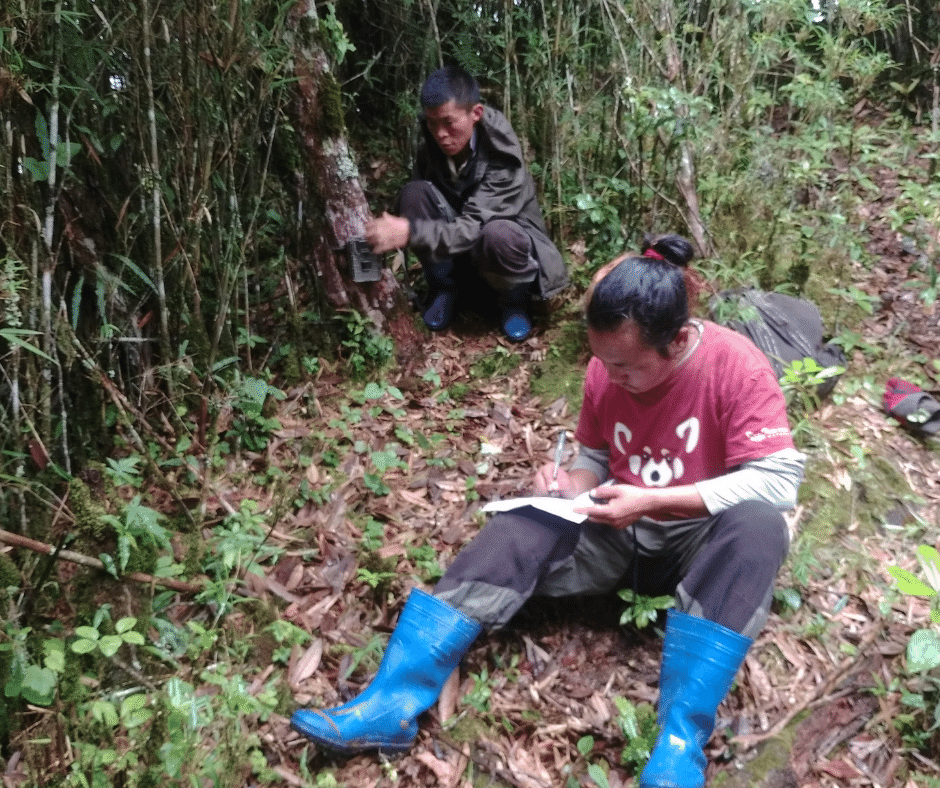
RPN field technician and FG installing camera trap.
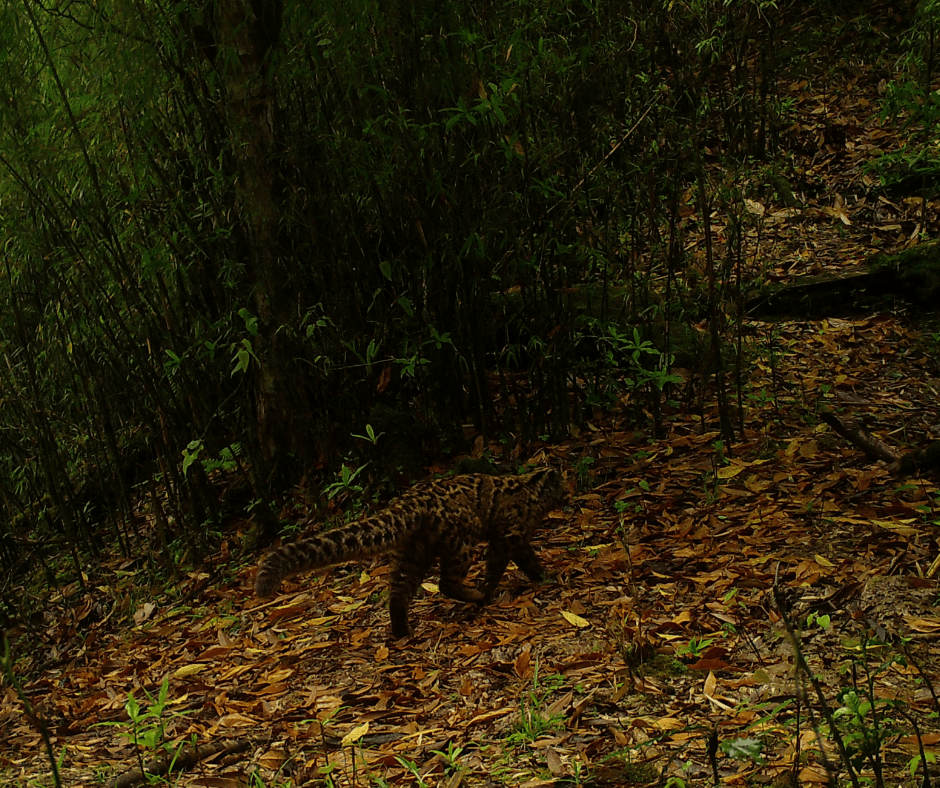
Marbled cat in red panda habitat in Eastern Nepal. ©RPN
“The first-ever record of a tiger in Ilam district demonstrates the significance of the PIT corridor in eastern Nepal, and how it needs to be a global conservation priority,” says Ang Phuri Sherpa, RPN’s Country Director. The PIT corridor provides connectivity to the Kangchenjunga Conservation Area in Nepal and Singalila National Park in India which is somehow connected with the Mahananda Wildlife Sanctuary of West Bengal where tigers live.
The Bengal tiger is categorized as “Endangered” in the IUCN Red List of Threatened Species; listed under Appendix-I by the CITES and protected by the Government of Nepal. Tigers in Nepal are distributed to five protected areas in the Terai Arc Landscape (TAL) covering 18 districts and 9 biological corridors in Nepal. Nepal has a long history of tiger conservation since the inception of the protected areas system to the ambitious TX2 Goal: to become the first country to double the tiger population by 2022. A census in 2009 recorded the national tiger count at 121 individuals and a study in 2018 has recorded 235 tigers in the wild — illustrating Nepal’s progress and commitment to tiger conservation.
"The connectivity of habitat is important for the dispersal of wild tigers. It is crucial to continue the conservation of forests with local communities for the future of tigers." said Dr. Ghana Shayam Gurung, Country Representative of WWF Nepal.
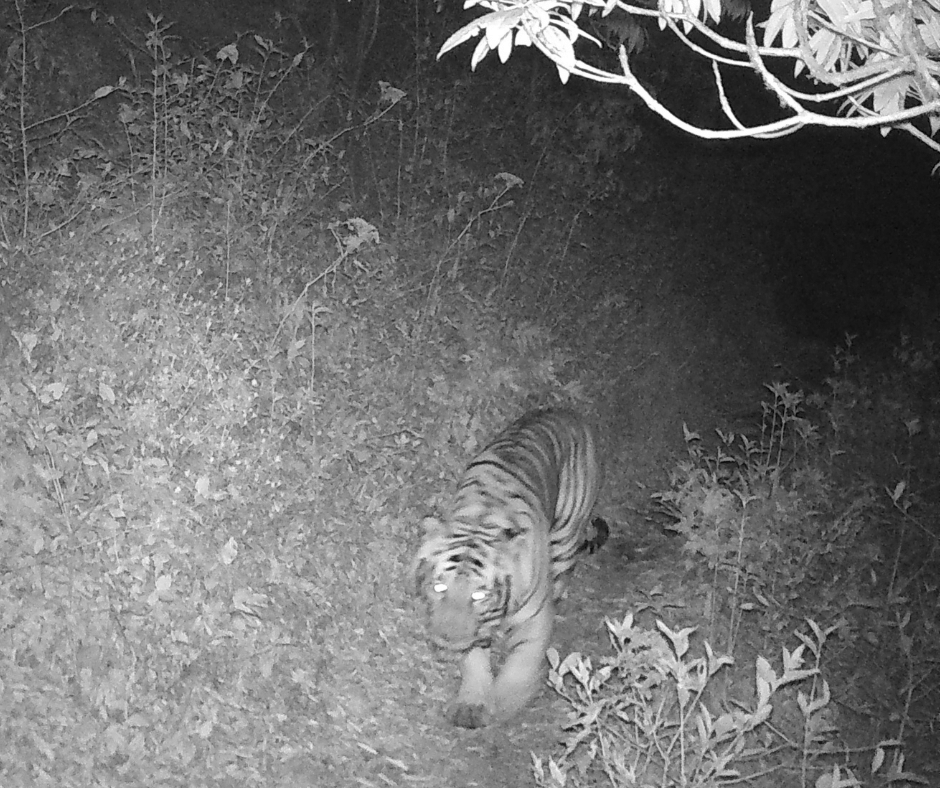
Bengal tiger in red panda habitat in eatstern Nepal. © RPN
This latest photographic evidence of the Bengal tiger in eastern Nepal’s red panda habitat emphasizes the need for high-mountain tiger conservation and opens up a multitude of research possibilities. An in-depth effort is required to understand the tiger movement and compatibility of high-altitude ecology with tiger growth.
Dr. Eric Dinerstein, the Director of Biodiversity and Wildlife Solutions at RESOLVE and author of Tigerland and Other Unintended Destinations has worked in tiger conservation in Nepal since the 1970s. He remarked, “How amazing to detect tigers returning to the upper edge of their range. Yet another accomplishment for Nepal, leading the world in wildlife restoration.”
“Lack of evidence-based studies in the past may have deprived us from such unusual sightings. Camera-trapping in other potential sites at mid and high-mountain ranges may reveal more,” said Damber Bista from the University of Queensland who is leading the GPS-collar red panda study in Ilam district. This unprecedented sighting of the Bengal tiger affirms the significance of the PIT corridor in landscape connectivity for multiple flagship species and transboundary-level conservation.
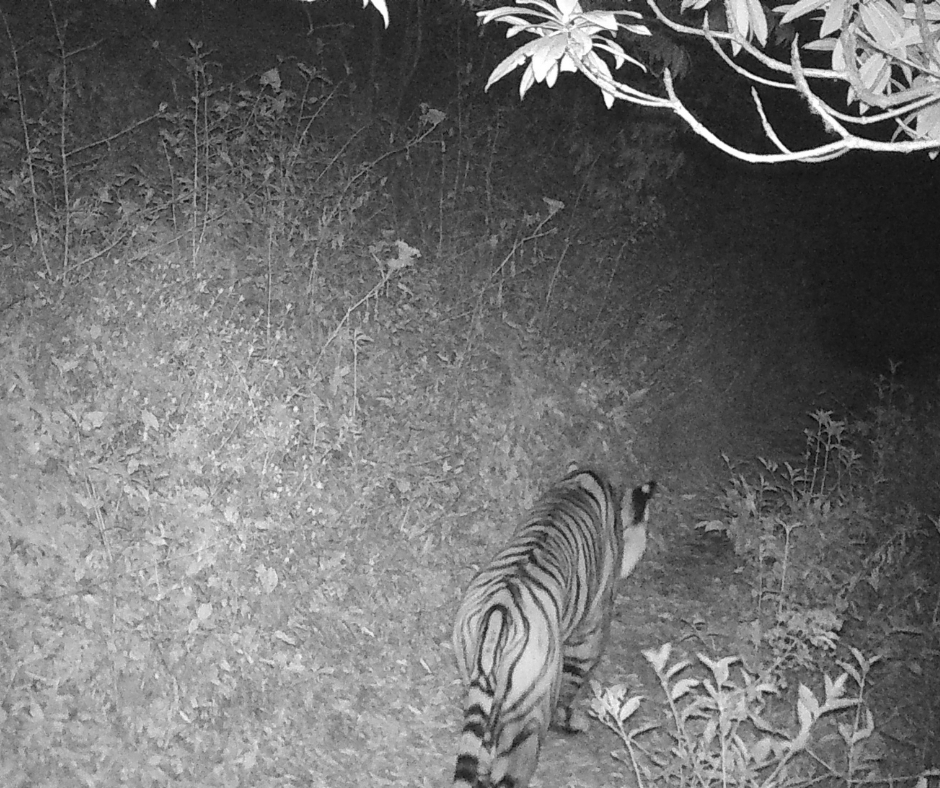
Bengal tiger in red panda habitat in eastern Nepal. © RPN
Dr. Nakul Chettri from ICIMOD who managed conservation projects in the transboundary KL for decades said “Tigers in higher elevations have been previously reported from adjacent Singalila National Park of Darjeeling, Neora Valley National Park, Sikkim and recently in Bhutan. A safe passage through contiguous corridors to higher elevation could be a reason for the tiger in higher altitudes in KL. Thus, transboundary cooperation is necessary to restore fragmented and isolated habitats to connect landscapes. ICIMOD is happy to be a facilitator of KL.”
Dr. Hem Baral, Country Manager of ZSL Nepal who wrote a comprehensive book on tigers in Nepali said “Vertical gradient and forest corridors provide important refuge from, and help to mitigate, climate-induced threats. Kudos to RPN for their hard work and sharing this information to ensure Nepal still has habitat for tigers to live at higher altitudes!”
For more information:
Madhuri Karki Thapa, Under Secretary, Department of Forests and Soil Conservation, Phone: +977 1 4221231, Email: madhureethapa@gmail.com
Sonam Tashi Lama, Program Coordinator, Mobile: +977 9841843968, Email: sonam.lama@redpandanetwork.org
Print and broadcast media contact:
Terrance Fleming (877) 854-2391 Ext. 101, terrance@redpandanetwork.org
Red Panda Network (RPN) protects wild red pandas and their habitat through the education and empowerment of local communities. Learn more about our work at www.redpandanetwork.org.

